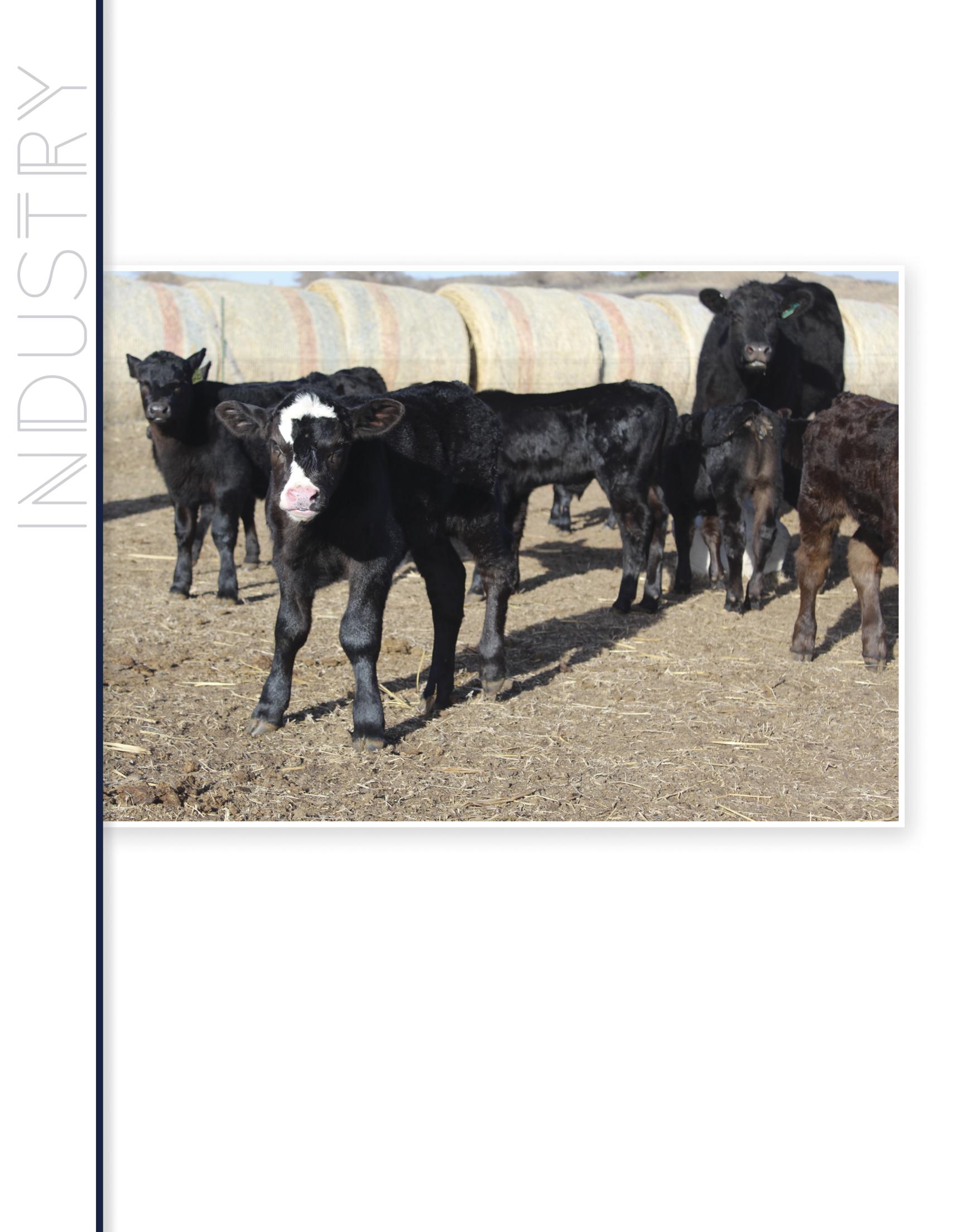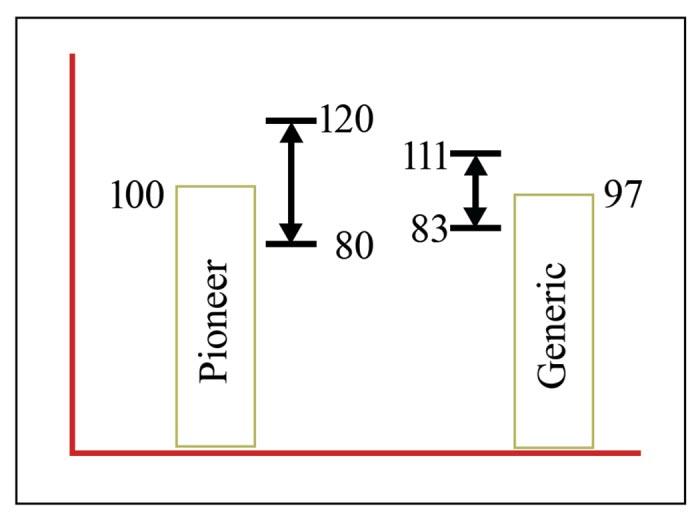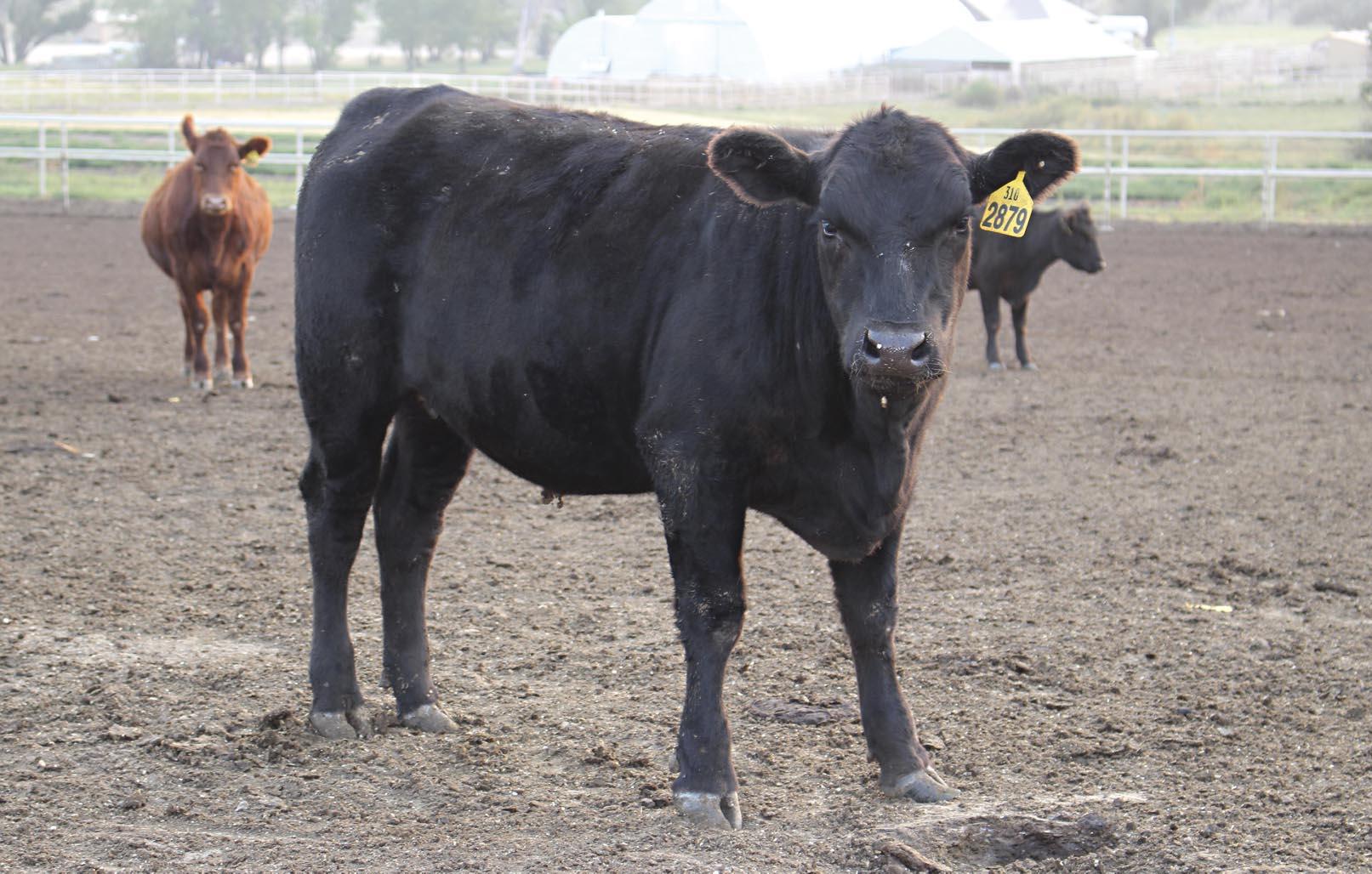
8 minute read
VETERINARY GENERIC DRUGS FOR FOOD ANIMALS
The requirements for approval of a generic drug by the FDA Center for Veterinary Medicine (FDA CVM) are often the subject of confusion and misinformation. For purposes of clarity and brevity, this article focuses on the requirements for approving a generic injectable product for use in food animals, intended as a general overview of the generic drug approval process.
By Michael D. Apley, DVM, PhD, DACVCP, Frick Professor of Clinical Sciences, Kansas State University College of Veterinary Medicine
Summary
• Original pioneer products must successfully complete 7 technical sections for approval by the FDA CVM.
• Generic products for food animals must complete 6 technical sections, 4 of which are the same as for the original pioneer product.

• The generic product must demonstrate bioequivalence to the pioneer product. Bioequivalence studies bridge the generic product to the pioneer product, which was proven to be safe and effective.
• The bioequivalence technical section may be satisfied by a biowaiver for some generic dosage forms with the same formulation as the pioneer product.
·• The FDA CVM Human Food Safety team reviews the human food safety technical section for the generic drug application and determines if additional information is needed.
• Some myths considered in this article, all of which are untrue, include...
o Generic injectable drugs may have as little as 80% of the active substance concentration as the pioneer product.
o Generic drugs have wider manufacturing tolerances than pioneer products.
o Compounded products are generics, right?
Introduction
The requirements for approval of a generic drug by the FDA Center for Veterinary Medicine (FDA CVM) are often the subject of confusion and misinformation. For purposes of clarity and brevity, this article focuses on the requirements for approving a generic injectable product for use in food animals, intended as a general overview of the generic drug approval process. As in any complicated process, there are many “ifs, ands, and buts” which may affect any particular approval.
Pioneer (NADA) Drug Approvals
It is first necessary to understand the approval requirements for the original drug product, often referred to as the “pioneer” version of the drug. While we usually say a drug is approved by the FDA, the FDA CVM actually approves the New Animal Drug Application (NADA), made up of 7 required technical sections. The science and practices associated with terms such as good manufacturing practices (GMPs), good clinical practices (GCPs), and good laboratory practices (GLPs) are integral to successful completion of the sections. The FDA CVM then prepares a Freedom of Information (FOI) summary in cooperation with the sponsor; this is a public document which summarizes the studies and conclusions for each of the technical sections. The technical sections for a pioneer NADA are as follows, as listed in FDA Guidance for Industry (GFI) #132, dated May 2018. Quoted text are excerpts taken directly from GFI #132.
a. “This section contains complete information regarding the manufacture of the new animal drug active ingredient and the new animal drug product. It includes information on personnel, facilities, components and composition, manufacturing procedures, analytical specifications and methods, control procedures, stability, containers and closures, Good Manufacturing Practice (GMP) compliance, and many other aspects of the chemistry and manufacturing processes (21 CFR 514.1(b)(4) and (5)).”
2. Effectiveness
a. “This section contains full reports of all studies that show whether or not the new animal drug is effective for its intended use (21 CFR 514.1(b)(8)(i)). This section includes studies conducted by or on behalf of the sponsor or available to the sponsor by right of reference… This section includes any additional pertinent information that is known about the effectiveness of the drug at the time the technical section is submitted.”
3. Target Animal Safety
a. “This section contains full reports of all studies required by FDA to demonstrate whether or not the new animal drug is safe to the target species (21 CFR 514.1(b)(8)(i))… This section also contains any studies or references relevant to the safety of humans that administer or may come into direct contact with the new animal drug (user safety)...”

4. Human Food Safety a. “This section is submitted only for applications for new animal drugs intended for use in species that are used for human food (foodproducing animals). This section includes a description of practicable methods for determining the quantity, if any, of the new animal drug in or on food, and any substance formed in or on food because of its use, and the proposed tolerance or withdrawal period or other use restrictions to ensure that the proposed use of the drug will be safe (21 CFR 514.1(b)(7)). This section should also contain any data relating to residue toxicology (including the impact of residues of antimicrobials on human intestinal microflora), residue chemistry, and, if the new animal drug is an antimicrobial, microbial food safety…”
5. Environmental Impact a. “This section (21 CFR 514.1(b)(14)) contains either an environmental assessment (EA) under 21 CFR 25.40, or a request for categorical exclusion under 21 CFR 25.30…”
6. Labeling
7. All other information
To describe the process as complex and resourceintensive is an understatement.
Generic (ANADA) Drug Approvals
Once the pioneer drug is off patent, or in some cases after expiration of an additional marketing exclusivity period, the FDA is granted authority by the Generic Animal Drug and Patent Term Restoration Act of 1988 to approve Abbreviated New Animal Drug Applications (ANADAs) for generic copies of the pioneer drug. Approval of the ANADA requires the acceptance of 6 technical sections by the FDA CVM. A public FOI document is also prepared.
1. Labeling a. This must be similar to the Pioneer drug (also referred to as the Reference Listed New Animal Drug, or RLNAD).
2. Chemistry, Manufacturing, and Controls a. The section has the same requirements as for the pioneer product or any approved drug.
3. Human food safety a. “In the instances where human food safety information is required, the division responsible for the evaluation of this information will advise the sponsor as to the requirements that must be met.” Human food safety information is required for all drugs intended for use in food animals.
4. Environmental Impact a. This section is the same as for the RLNAD.
5. Bioequivalence a. “This section contains full reports of all studies that show the generic new animal drug is bioequivalent to the reference listed new animal drug or all information submitted in support of a waiver from the requirement to demonstrate in-vivo bioequivalence.”
6. Patent and Marketing Exclusivity a. “This section includes the appropriate patent certification or statement (see 21 CFR 314.94(a)(12)). It also contains an appropriate statement with regard to the current marketing exclusivity status of the reference listed new animal drug.”
Notice that the technical sections for effectiveness and target animal safety are not required for generic ANADA applications. Bioequivalence studies bridge the generic product to the pioneer product, which was proven to be safe and effective. Technical sections unique to the generic drug approval procedure are Bioequivalence and Patent and Marketing Exclusivity.
All generic products must demonstrate bioequivalence. For products where this is accomplished through approval of a biowaiver such as an injectable solution, bioequivalence may be demonstrated by a comparison of the generic formulation to the pioneer on the basis of relevant physiochemical properties. If there are any changes in the generic product which affect bioavailability, the biowaiver will be denied.
When a biowaiver is not granted, then a bioequivalence study is required. We will use a pharmacokinetic (blood concentration) study as an example, but in some cases alternatives to this type of bioequivalence study may be used, such as a pharmacologic end-point study or clinical end-point study.
For a typical pharmacokinetic bioequivalence study, both the pioneer and proposed generic drug are given to each of multiple animals in a “cross-over” study design where each animal in the study receives both products with a “wash out” period observed between the two drugs. When the plasma concentration data are analyzed, the focus is on two parameters; these are the maximum achieved plasma concentration (Cmax) and the area under the plasma concentration curve as plotted on a chart (AUC). The Cmax gives an indication of the rate (speed) of absorption of each product and the AUC gives an indication of the extent (how much) of drug absorption over the observed time period.

This next part about the analysis of these values is very important because it is a source of one of the myths about generic products. A 90% statistical confidence interval is constructed around the average Cmax and AUC values for the proposed generic product. This means that given the variability observed in the study, there is a 90% probability that the true average of the value lies with this range. The outer limits of this confidence interval must generally fall within -20% and +20% of the average value for the pioneer product (+ 25% if the values are log transformed). Let’s use the example below to clarify this approach.
In our example, the pioneer product maximum concentration in the plasma (Cmax) average across all study animals was 100. Calculating the +/- 20% range around the pioneer Cmax results in a range of 80-120.

In this same example, the average for the proposed generic product is 97, with a 90% confidence interval for the true average of ± 14 (83 to 111). This product would meet bioequivalence standards for Cmax; the outer bounds of the 90% confidence interval fall within ± 20% of the pioneer product average.
The same process would be repeated for Area Under the Concentration curve (AUC). The standards must be met for both Cmax and AUC in order for a proposed generic product to demonstrate bioequivalence.
Generic Myths
A generic product can have as little as 80% of the concentration of the pioneer product. First, the ±20% range is about statistical analysis of plasma concentration values, not drug concentration in the product. Secondly, to meet the requirements within the variability encountered in a study, the values for the generic drug must be quite close to the pioneer product values so that the outer boundaries of the 90% confidence interval fall within the prescribed range around the pioneer product average (generally +/- 20%).
Generic products have wider manufacturing tolerances than pioneer products. The FDA applies the same CMC requirements to generic and pioneer drugs.
Compounded and generic products are essentially the same thing. You now understand the FDA CVM approval process for generic products. Compounded products do not have a similar approval process and are not reviewed by FDA prior to marketing. Any assurances as to the quality of compounded products are provided by the compounder and their processes. This includes information like compounded product strength and expiration.
Conclusion
This article scratches the surface of the generic drug approval process. More can be learned about the process from the resources listed below. You can access multiple information sources, including the FOI, for products approved by the FDA Center for Veterinary Medicine at Animal Drugs @ FDA.
Thank
For Additional Information:
FDA Center for Veterinary Medicine Guidance for Industry #35. Bioequivalence Guidance. (2006)
FDA Center for Veterinary Medicine Guidance for Industry #132. Administrative Applications and the Phased Review Process. (2018)
FDA Center for Veterinary Medicine Draft Guidance for Industry #171. Demonstrating Bioequivalence for Soluble Powder Oral Dosage Form Products for Type A Medicated Articles Manufactured from Active Pharmaceutical Ingredients Considered to be Soluble in Aqueous Media. (2019)
Dr. Apley is a veterinarian with a PhD in physiology (pharmacology). He is a Diplomate of the American College of Veterinary Clinical Pharmacology. His practice background includes general practice in central Kansas and a feedlot consulting/contract research practice based in Colorado. Dr. Apley was on the College of Veterinary Medicine faculty at Iowa State University for 9 years through 2005. He is currently a professor in the Department of Veterinary Clinical Sciences at Kansas State University. Dr. Apley works with veterinarians and producers throughout the United States concerning the use of drugs in food animals and also in the area of beef cattle health with an emphasis on feedlots.
Dr. Apley teaches in the beef production medicine, large animal medicine, clinical pharmacology and pharmacology courses. His research interests include infectious disease, antibiotic efficacy and resistance, antibiotic stewardship, drug residues, and applications of drugs in food animals. In 2016, he and collaborators started a 5-year study funded by the FDA which focuses on quantifying antibiotic use in feedlots and dairies.
Dr. Apley is a past president of the Academy of Veterinary Consultants, the American College of Veterinary Clinical Pharmacology, and the American Association of Bovine Practitioners. In 2015, Dr. Apley was appointed as a voting member of the Presidential Advisory Council on Combating Antibiotic Resistant Bacteria. In 2019 he was reappointed to another 3-year term.











